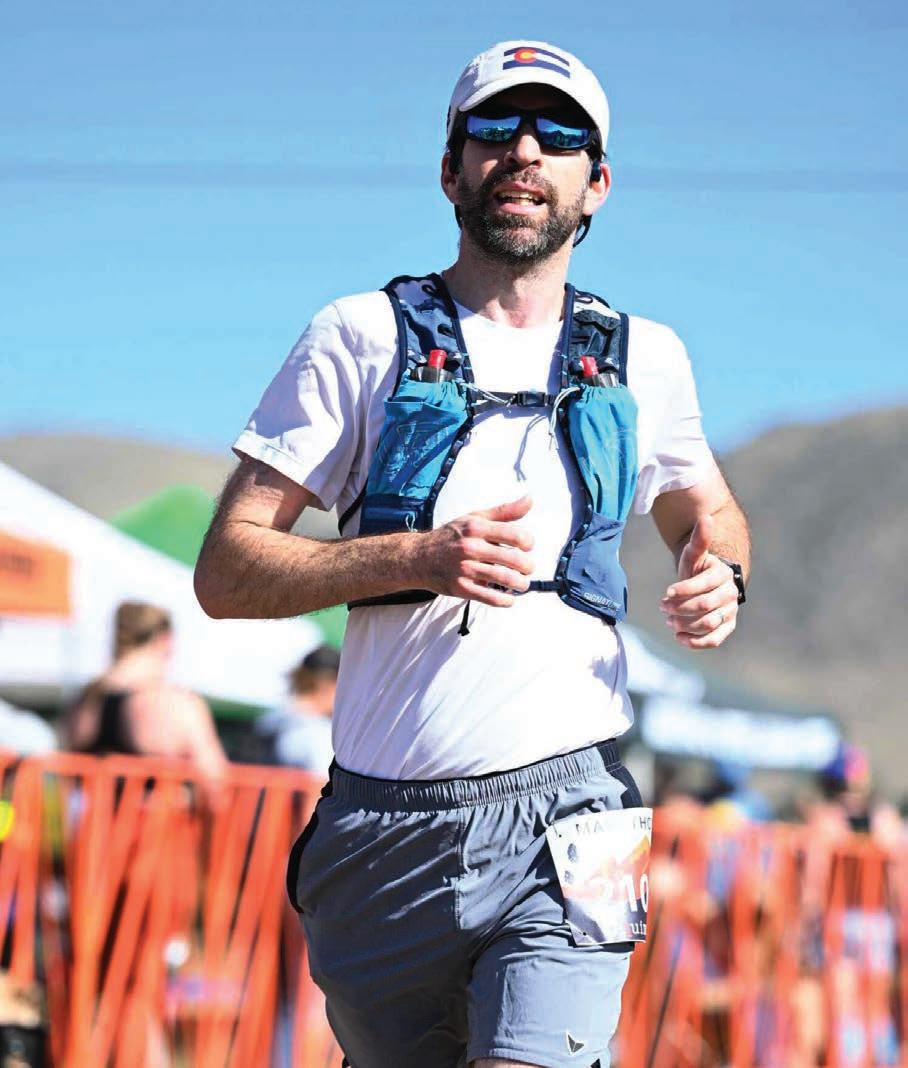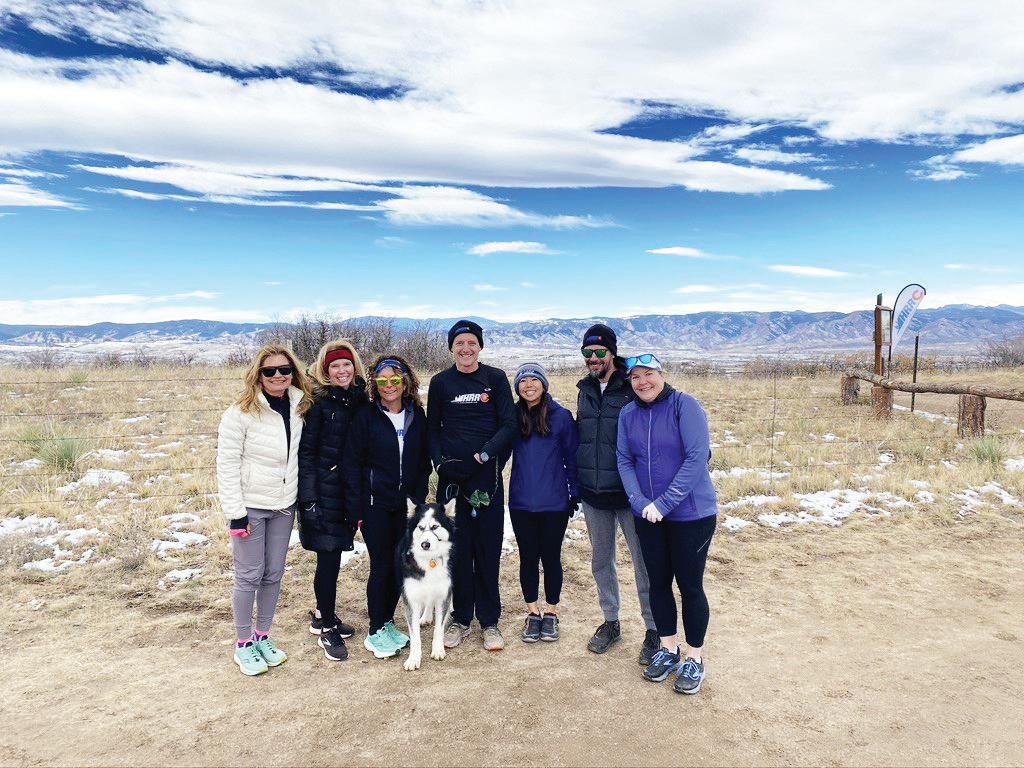
4 minute read
NORTON
lo and behold there it is waiting for us to consume it.
In a recent meeting with a partner, they were discussing how their technology could serve up information in real time, measuring response times in milliseconds. Again, we have become a culture that has a need for speed, instant grati cation.
As I came across a snail the other day, I watched it move slowly across the pavement. And I found myself fascinated by the slow and deliberate pace of the snail. I know it is a snail and snails aren’t equipped to move any faster, so they have to settle for the slow pace at which they move. It took the snail ve minute or so to cross the pavement and move into the grass. Just ve minutes, which for us could now feel like an eternity.
So in that moment I re ected on my own need for speed. Although I can’t slow down advancements in technology that are designed to speed things up, nor can I or should I worry about others and their need for speed, I can decide when it’s time to slow things down for myself. Can my walks along the shoreline be a little slower so I can appreciate the sounds of the waves lapping against the sand, taking in the salt air, and maybe nding a unique shell or piece of sea glass?
Can my hikes in the mountains be slowed down just a bit so I can take in the wild owers, watch the streams rushing down the mountainside, or look out at the amazing vistas from each other.” e organization was originally founded following the 2010 earthquake in Haiti - now more than 150,000 volunteers in the organization across the nation and over 1,100 operations domestically and internationally. e organization pairs military veterans with medical professionals, rst responders and technology solutions to provide an impactful service. Not only do they help with clean up after tornado events such as this, but they also take part in re mitigation and other natural disasters such as hurricanes.
Team Rubicon is a veteran-led humanitarian organization that serves global communities during and after disasters.
A majority of the damage from the tornado resulted in damaged and downed trees. With about 30 volun- the openings through the trees? teers a day, teams are deployed to residents in need and work to cut down damaged trees, cut up fallen trees, haul branches away and move debris to the curb.
We are de nitely a society on the go. We want the speed limits to be higher, our ights to get us to our destination faster. We want our meals delivered to our homes or tables in unreasonably fast times. We expect the elevator to show up as soon as we press the button. It’s the pace of the race these days that we are trying to keep up with and the pace is getting quicker and quicker each day.
I thought about the snail again. And as I did, I was reminded that moving at a snail’s pace is okay sometimes. I enjoy a slow brewing pot of co ee as it lls the kitchen with that beautiful co ee aroma. I love reading and spending time slowly letting the story develop and not racing to nish the book. I nd it so much more meaningful to pray slowly as it connects me at a deeper level to those I am praying for and to my faith. And when I can slow down enough before rushing out of the house to write notes to my family and leave them around the house, it makes everyone feel so loved and appreciated.
Is it time to slow down a bit for you?



Are you running a race that just gets faster and faster all the time? I would love to hear your story at gotonorton@gmail.com, and when we can move at a snail’s pace sometimes, it really will be a better than good life.
Michael Norton is an author, a personal and professional coach, consultant, trainer, encourager and motivator of individuals and businesses, working with organizations and associations across multiple industries.
“We have di erent levels of training, like formal training that we go through,” said Fox.








Fox said that some of the trees in the area are out of their scope and they encourage homeowners to hire a professional to nish up the rest after Team Rubicon has done all they can do.
“ ey’re just a dedicated group of volunteers who are committed to helping residents,” said Douglas County Commissioner Lora omas. “ ere are some of our residents who simply do not have the nancial means to clear the trees o their properties or their fences, to put and YMCA for this new center, and to Centennial residents — let’s support and contribute ideas to make it a great success!

Location: 6972 S. Vine St., #366 (east of the library across from Snobahn)
Jean Engler Centennial
How to take up running, from starting out to marathons
BY ELLIS ARNOLD EARNOLD@COLORADOCOMMUNITYMEDIA.COM
Roxane Geisler started running in high school as a new challenge — somebody told her she should run cross country.
“I didn’t even know how to run a mile,” said Geisler, who is now president of the Highlands Ranch Running Club.

Getting into running “just gradually happened for me,” said Geisler, who is 54. “Suddenly, I was like, ‘Oh, I really do enjoy it, and I love getting out and seeing the views.’”
For people who are inexperienced at running but want to improve, it’s key not to be intimidated, Geisler said.
“A lot of people think, ‘Oh, I can’t join the running club because I’m not a real runner.’ And that’s totally silly,” Geisler said. “If you run, you’re a runner.”
Ryan Marker, an assistant professor who teaches exercise physiology at the University of Colorado Anschutz Medical Campus in Aurora, said it’s important for beginners to start slow. “Setting appropriate expectations, I think, is really important,” Geisler said. “So if someone’s never run before, you’re not going to get o the couch and do a marathon.”
But with the right plan, even beginners can work their way up to a marathon within months. (Here’s a tip: You don’t have to run the whole thing.)
Here’s some advice on how to start running or take your training to the next level.
Part of the group
One thing that can help you get into running: nding a group of runners to keep you moving.
When Geisler moved to Highlands Ranch in 2003, she noted how many people were out running by themselves.
She learned about the Highlands Ranch Race Series, and part of the idea behind starting her running club was to get some runners to train together.

“It makes running so much easier, training so much easier, when you have people to train with,” Geisler said.
And the people she’s met through her club “were a tremendous in uence on me — just people who really push themselves and try to get the best out of themselves,” said Geisler, who has run marathons.
e club provides a communal atmosphere:








